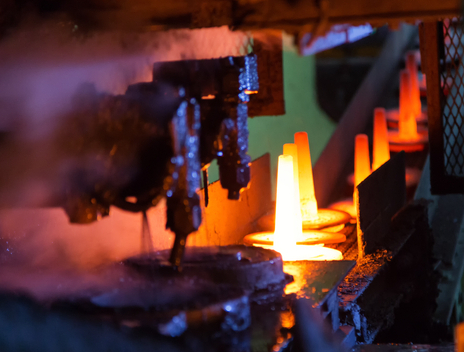Continuous die casting, also known as continuous casting or semi-solid die casting, is a manufacturing process used to produce metal components with high precision and efficiency. It is a variation of die casting, which is a process of injecting molten metal into a mold cavity under high pressure to create complex shapes. In continuous die casting, the process is performed in a continuous manner, allowing for a constant flow of molten metal into the die cavity. The key difference from traditional die casting is that the die is not opened and closed for each casting cycle. Instead, the die remains closed and the casting process is carried out continuously, hence the name.

Continuous Die Casting Guide: Process, Advantages, Applications, Mold Designs & More
Continuous Die Casting Process
The process begins with the molten metal being fed into a heated holding furnace. From there, the metal is transferred into a shot sleeve, which acts as a conduit for the molten metal. The shot sleeve is then connected to the die, where the actual casting takes place. The molten metal is injected into the die cavity under high pressure, ensuring that the metal fills all the intricate details of the mold. Once the casting is complete, the solidified component is ejected from the die and the process repeats. This continuous cycle allows for a high production rate, making continuous die casting suitable for large-scale manufacturing.
Continuous Die Casting Advantages
Continuous die casting offers several advantages over traditional die casting methods. Firstly, it eliminates the need for separate mold opening and closing actions, reducing cycle times and increasing productivity. Additionally, the continuous flow of metal ensures a consistent and uniform filling of the mold cavity, resulting in high-quality castings with minimal defects. The process also allows for tighter dimensional tolerances and improved surface finishes.
Continuous Die Casting Applications
Continuous die casting is commonly used in the production of components for automotive, aerospace, and other industries where high-quality, complex metal parts are required. It is particularly suitable for components that have thin walls, intricate shapes, or require high strength and precision.
Continuous Die Casting Process Controls
Continuous die casting requires precise control of various parameters to ensure consistent and high-quality castings. Parameters such as metal temperature, injection pressure, die temperature, and cooling rates are closely monitored and controlled throughout the process. Advanced sensors and automation systems are often employed to maintain optimal process conditions.
Continuous Die Casting Mold Designs
The design of the die or mold used in continuous die casting is crucial for achieving accurate and repeatable results. The mold must be able to withstand the continuous high-pressure injections and maintain dimensional stability. The mold design also accounts for factors such as cooling channels to control solidification rates and venting systems to allow for the escape of gases during the filling process.
Continuous Die Casting Alloy Selections
Continuous die casting can be used with a wide range of metal alloys, including aluminum, zinc, copper, and magnesium. The choice of alloy depends on the specific requirements of the component, such as strength, weight, corrosion resistance, and cost. The properties of the selected alloy influence the process parameters and cooling rates required for successful casting.
Continuous Die Casting Semi-Solid Stats
In some cases, continuous die casting is performed using alloys in a semi-solid state, where the metal is partially solidified. This technique is known as semi-solid die casting or thixocasting. The semi-solid state offers benefits such as reduced shrinkage, improved flow characteristics, and enhanced mechanical properties of the castings.
Continuous Die Casting Operations
After the castings are ejected from the die, they may require additional operations such as trimming, deburring, heat treatment, and surface finishing to achieve the desired final product. These secondary operations are typically performed to remove any excess material, smooth rough edges, enhance mechanical properties, or improve the surface appearance.

